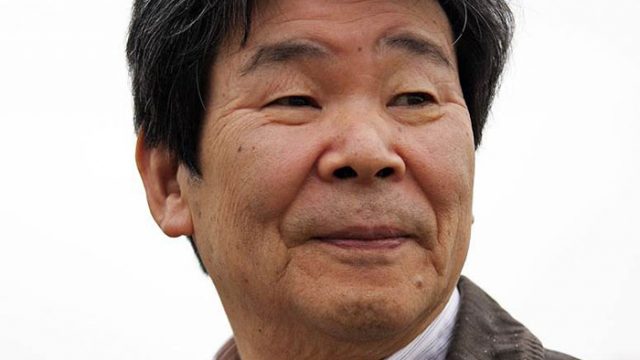To the general public, he has always been in Hayao Miyazaki’s shadow. Even I, I must confess, tend to think of him as “the other guy from Ghibli,” putting him in company such as Art Garfunkel and Andrew Ridgeley. However, while no one I know is going to go out on a limb and claim that Art Garfunkel is more talented than Paul Simon, there are people who will make that argument for Isao Takahata. Their styles are very different, but there is something quietly stunning to much of Takahata’s work that will be greatly missed.
He took the entrance examination to Toei Animation almost on a whim, though he had been influenced enough by the French animated film The King and the Mockingbird to have studied French literature in college. But animation is where he found his place, even though his directorial debut was a failure financially. He drifted around various animation studios in Japan, finally coming to Ghibli in 1984, where he served as producer to Nausicaä of the Valley of the Wind. He also produced Castle in the Sky.
In 1988, he made Grave of the Fireflies. If he had been associated with no other film in his life, this would have sealed his place in movie history. Roger Ebert, often a defender of foreign films otherwise unseen in the US, declared it one of the greatest war films ever made and proof that it was possible to make an anti-war film. I myself saw it in college, many years ago, with absolutely no knowledge of what it was or what it was about. I remember the lights coming up in that lecture hall where the anime club did its screenings and almost the entire room of us sitting there stunned, except the guy with the terrible taste. His dislike of the film proved to us that the best way to discern quality was to think the opposite of what he did.
Many people, today, will be writing about Grave of the Fireflies and The Tale of Princess Kaguya, and there is much to be said about them. Kaguya, in particular, is one of the most starkly beautiful animated films I’ve ever seen. But there was more to Takahata’s work than Heavy Drama or Starkly Beautiful. There was the low, broad humour of Pom Poko, a movie that’s hard to explain to people without a familiarity in Japanese folklore. Those aren’t raccoons; they’re tanuki. And, yeah, the dub tells you they’re pouches, and I guess biologically they are, but that one does indeed make a boat out of its testicles.
Still, the Takahata movie I just plain like most, not think is the best or most beautiful, is My Neighbors the Yamadas. Which is, at times, beautiful as well. But it’s a series of stories, some deep and moving and some light and frustrating, about one family in Japan. They drive each other crazy. They make things difficult for one another. They love each other very much. The animation is as sparse as Kaguya but is more comical. It’s an underrated joy. Not his best film, but one I think not enough people will be remembering today.

